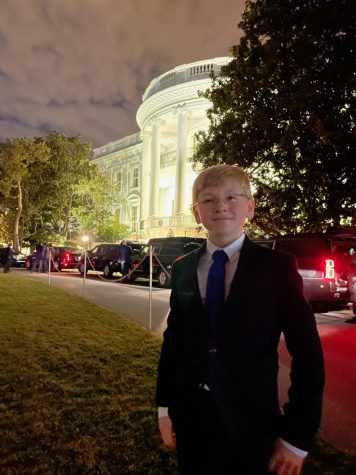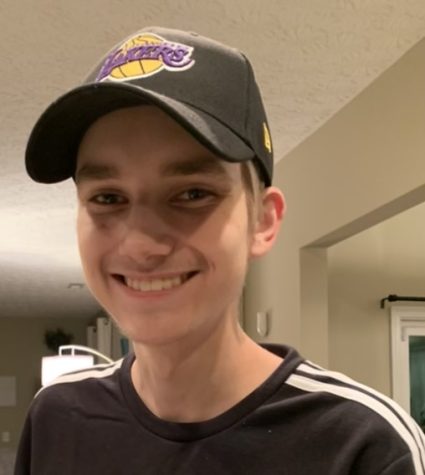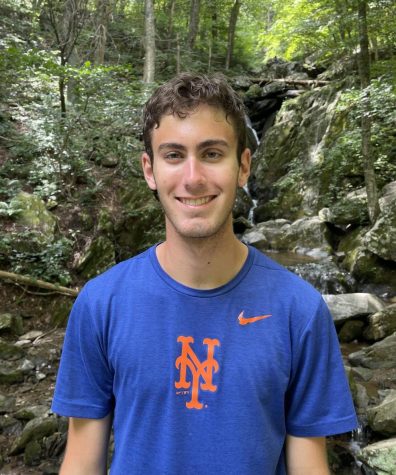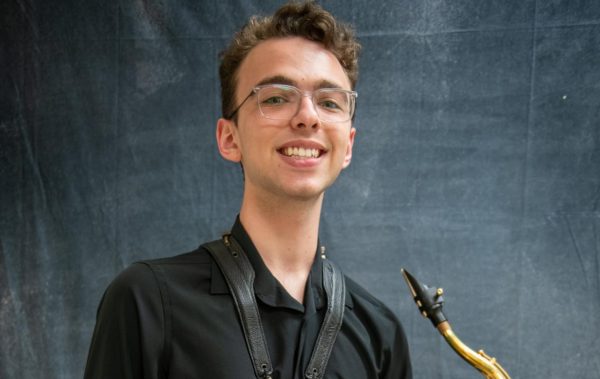Inside one Chesterfield family’s fight to lower drug costs
Swift Creek Middle School student Joshua Davis sitting next to First Lady, Dr. Jill Biden, at the State of the Union address.

On March 1, 2022, thirteen-year-old Type 1 diabetes advocate Joshua Davis sat alongside members of Congress in the Capitol Building during the annual State of the Union address. The Swift Creek Middle School student attended as a guest of First Lady Jill Biden.
Davis was invited to the speech alongside his brother Jackson, a sophomore at Clover Hill, and his parents, Brian and Shannon Davis. Both Joshua and his father have Type 1 diabetes, and the family advocates for awareness of the condition and improvements to the lives of people who rely on medication such as insulin to survive. President Joe Biden mentioned Davis when he spoke about his plan to lower prescription drug costs across the nation.
“For Joshua, and for the 200,000 other young people with Type 1 diabetes, let’s cap the cost of insulin at $35 a month so everyone can afford it,” Biden said.
Inspired by the experience of sitting in the Capitol Building alongside United States lawmakers and other political activists, Joshua will never forget this exciting and unforgettable night.
“This is a once in a lifetime opportunity, it’s probably never gonna happen again,” Davis said. “It was also very interesting because I’ve never done this before, I didn’t know it was gonna happen. Then when he called me out and said, ‘Happy Birthday,’ I felt a very big mixture of emotions.”
The Davis family, like Biden, believe that insulin and other life-saving medications should be affordable for all Americans.
“Insulin costs about $10 a vial to make,” Biden said. “That’s what it costs the pharmaceutical company. But drug companies charge families, like Joshua and his dad, up to 30 times that amount.”
Joshua previously met President Biden when he introduced him for a speech in Culpepper, Virginia, at an event hosted by Representative Abigail Spanberger. Working with Representative Spanberger, the Davis family is focused to find opportunities to advocate for Type 1 diabetes and lowering prescription drug costs. One such opportunity is meeting with Spanberger and other Type 1 diabetes patients.
“Often when people get diagnosed with Type 1 diabetes they get upset [and] don’t understand what’s going on,” Davis said. “Something that our family has done is we’ve put ourselves on a list with our contacts. So when a family has someone that’s newly diagnosed, and they don’t know what it is, they can call someone on that list, and [we] can help walk them through [it].”
For Joshua, Brian and others with Type 1 diabetes, taking insulin is necessary because the autoimmune disease means that their bodies do not use the insulin they produce effectively.
“Insulin is my life support, I don’t have a choice whether or not I take it,” Joshua said.
Because medications like insulin are essential, Joshua believes that capping the costs would help everyone who relies on them.
“If they do manage to cap the cost for not only insulin, but all prescription drug costs, then it’s going to affect everyone in America in some way,” Joshua said.
The Davises are one of many American families who pay increased prices for insulin. In other countries, such as Canada, people pay $50 or less for a vial of insulin. According to Shannon Davis, the prices in America are significantly higher, as insulin can cost hundreds of dollars per vial.
“We can spend between six and seven thousand dollars a year on insulin, and then on top of that, additional diabetes supplies,” Davis said.
Though he does not personally have diabetes, Jackson sees the effect the high costs have on families across the country. Because of this, he supports President Biden’s plan to cap the cost at $35 a vial.
“My family, we’re pretty well off, [so] we can afford to both do the things we enjoy and keep my brother and dad alive,” Davis said. “But there are families, even in Chesterfield, that aren’t able to split between and may need to pick between the food, or the medicine, or the power. And it’s really terrible.”
Jackson believes that everyone should be able to get behind the idea of lowering the cost of life-saving drugs, no matter their political alignment.
“We just really need people to come together on both sides of the aisle and make this happen,” Davis said.
Joshua encourages students to get involved if they want to help reduce the price of medications like insulin.
“I work with a foundation called the JDRF, or Juvenile Diabetes Research Foundation,” Davis said. “They’re helping to fund a cure, and they do walks, and they do fundraisers. One way that people can help is start researching that and going to fundraisers.”
However, the opportunities are not limited to drug costs. Brian believes that students can make a difference for causes they care about by advocating, no matter how young they are.
“If a thirteen year old can raise awareness for diabetes, then anybody can throw their hat in the ring and raise awareness for something else,” Davis said. “They just have to take the initiative to do it.”
In the future, they hope to help advance research and technology to try and find a cure, in addition to lowering the costs of medications. Shannon considers insulin and Type 1 diabetes to be just the beginning.
“Insulin is getting a lot of movement and a lot of talk right now,” Davis said. “But our hope is that through the movement, with insulin being lowered, that more and more life saving drugs will fall in place.”
Jackson believes that his family’s work is far from over, and they will continue to fight for their cause. In particular, he hopes that they can make an even larger impact than they did with Joshua’s appearance at the State of the Union.
“I don’t know how he gets bigger from here, you know, going to the White House and the Capitol Building, but we’re definitely going to keep trying our hardest to make life easier for all these people with diabetes,” Davis said.

Now a senior at Clover Hill, Spencer is in his third year of being a journalist and second year of being an editor for the Cavalier Chronicle. Spencer’s...

Ben is a senior in his third year of writing for the Cavalier Chronicle and his second as an editor. His love for writing led him to join the staff, and...













